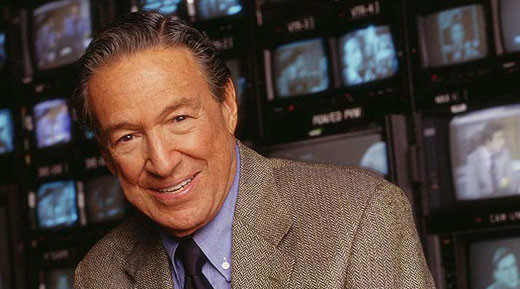Mike Wallace of “60 Minutes” fame gave obituary writers plenty to talk about when he died of a heart attack in April. He was a bulldog of a reporter, suffered from depression, fought dictators and generals, gave money to journalism schools, and married four times. But one small chapter in the 93-year-old journalist’s life was missing: the time he tried to save American journalism from destroying itself. I was a footnote in that chapter, so let me tell you what I know.
In 1997, Wallace, the man who perfected the ambush interview, had become concerned about the performance of the news media. Today, news executives are troubled by the lack of new business models to support journalism. We forget that back then; journalism was vexed by huge scandals. Remember when a Washington Post reporter won a Pulitzer by fabricating a story about an 8-year-old heroin addict? Or how journalists piled on Richard Jewell, the security guard who was wrongly implicated in the bombing at the 1996 Summer Olympics in Atlanta, Ga.? Or when Dateline NBC rigged a truck to explode in an attempt to support a story about vehicle hazards?
Wallace, who had fought legendary (and expensive) legal battles over his own news stories, felt that there should be a way for people who had felt they had been wronged by the news media to make their complaints heard. He had seized on a controversial experiment that had been started in 1973—the National News Council— a kind of citizen’s court that could hear complaints and make rulings about whether a reporter or news outlet had made a mistake or violated journalistic ethics. However, The New York Times and many other outlets and journalists viewed the National News Council as an intrusion on First Amendment freedoms, and the experiment died after an 11-year run.
So when Wallace started giving speeches about reviving the news council, he created quite a stir in journalism. He even devoted a “60 Minutes” story to the Minnesota News Council, a version that was operating at the state level.
At the time, I was a program officer at the Ford Foundation. Wallace’s stand came as quite a surprise, and people were paying attention to him. So I reached out to Wallace, and he agreed to help me convene a gathering of top news executives. Thanks in large measure to his clout, I was able to get the heads of three network news divisions—NBC, CBS and CNN—and a number of top newspapers editors to come to the Ford Foundation’s glass-walled headquarters in Manhattan. Gary Gilson, the head of the Minnesota News Council, spoke about the value of the council as a watchdog of the press, a less costly alternative to the courts and a way to help the public understand how journalism works. Without going into details, the news executives were surprisingly candid about how news media scandals affected the reputations of their organizations.
Not surprisingly, however, support for Wallace’s idea was tepid at best. Further research showed that a revival of the National News Council was unlikely to gain much traction. However, I did lead the Ford Foundation into developing a major series of grants that focused on news media credibility and ethics training for journalists. We also supported important media criticism programs, such as the Columbia Journalism Review, American Journalism Review, Online Journalism Review and “On the Media,” which grew into one of National Public Radio’s most popular weekend programs.
As a TV journalist, Mike Wallace reveled in making the tobacco industry, President Nixon’s White House and the U.S. military squirm. Clearly, he had no qualms about shaking up American journalism as well.


